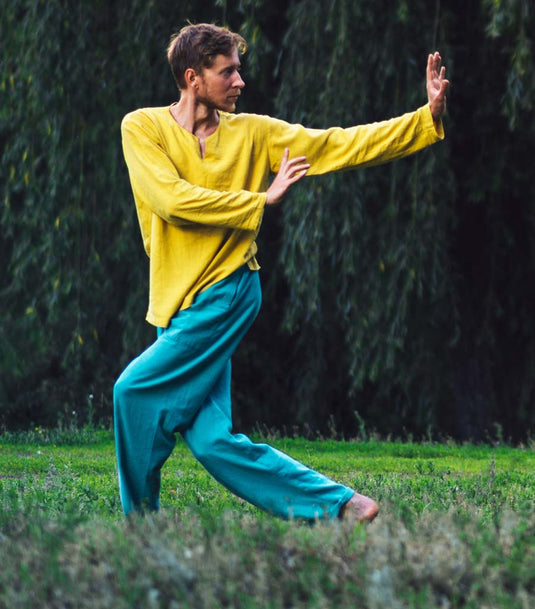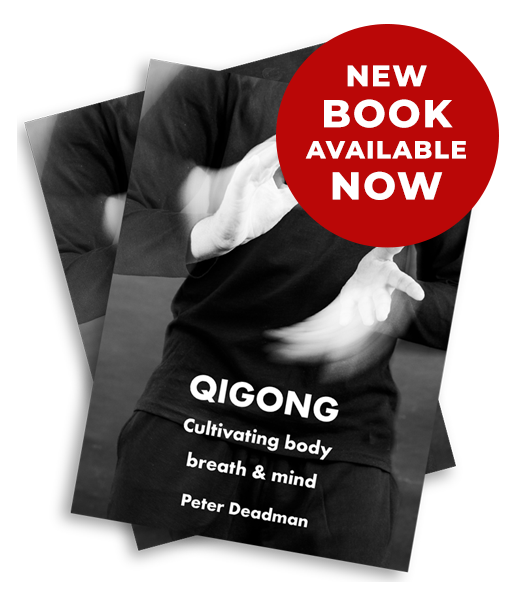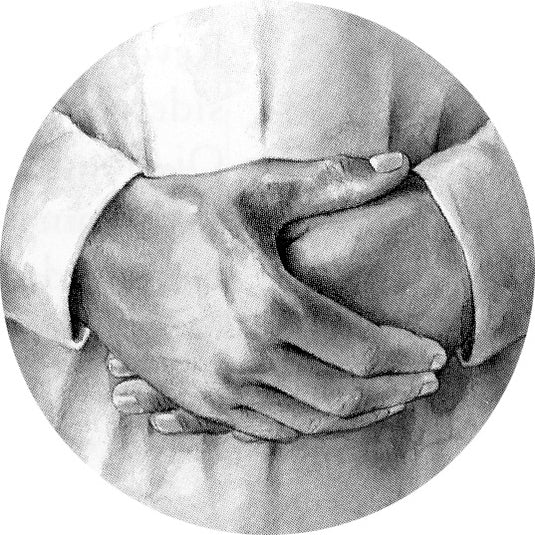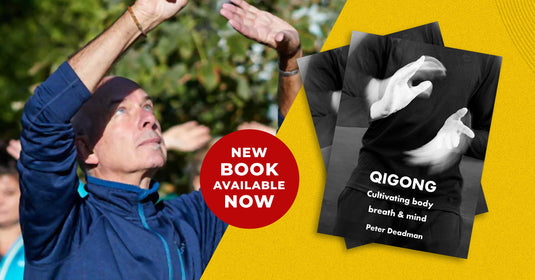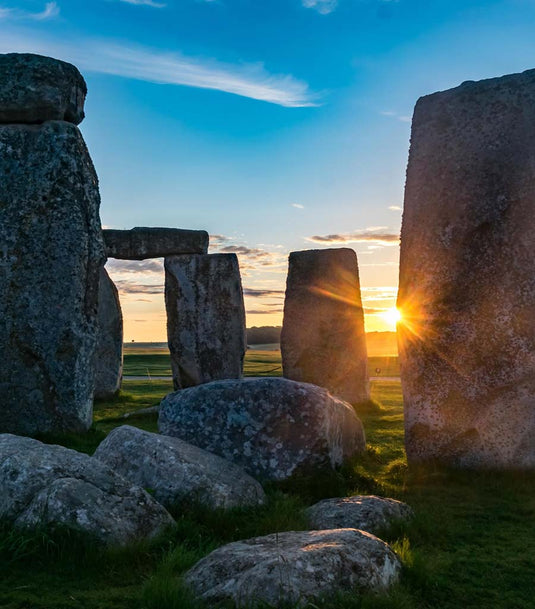Chinese martial arts are commonly differentiated into two styles: external-yang (waijia) and internal-yin (neijia). Of course the distinction is not rigid, since like all yinyang differentiation, each contains elements of the other. However it can be a useful shorthand.
Waijia – external – yang
Mention Chinese martial arts to most people and they likely think of people flying through the air, yelling and delivering dramatic kicks and punches, maybe even smashing bricks with their bare hands. Typified by the Shaolin fighting monks, this is waijia (pronounced whyjeea). Like much modern exercise, these external styles aim for aerobic fitness, muscular strength, speed and agility, and the training can be hard to the point of exhaustion. This kind of practice develops high levels of fitness and martial power, and – like all aerobic or strength training – can deliver a powerful mood-altering effect by rapidly moving qi and blood. However, it also comes with some potential disadvantages – it may not be suitable for the ageing body, there is an increased risk of injury, and its mood altering effects may be short-lived. Carried to extreme, it risks exhausting the body, weakening the immune system and increasing tension, and if used as self-medication for mental health problems can become addictive. As the 7th century sage Sun Simiao wrote, “The way of nurturing life is to constantly strive for minor exertion but never become greatly fatigued and force what you cannot endure.”
Neijia – internal – yin
What is called neijia (pronounced nayjeea) includes qigong, the three famous internal martial arts – taijiquan (tai chi), xingyiquan and baguazhang – and non-Chinese practices such as yoga (which the Chinese call ’Brahmin qigong’) and Pilates. Neijia focuses on stillness, softness rather than tension, and full body-breath-mind integration. This means the mind penetrates the interior of the body – into the breath, the joints, connective tissue, muscles and bones, the core and the acupuncture channels and points. It seeks nourishment, health, wellbeing, fascial elasticity, sinew strength, soft power, resilience, balance and expansion of the mind. Movement is often synschronised with slow deep breathing, maximisising the opportunity for awareness at every level of our being and (over time) helping to resolve both physical and emotional stagnation. Compared to waijia, therefore, it can have a more prolonged effect on moving qi and blood and altering emotional patterns, there is minimal risk of injury, and it can be practised at any age. Like waijia, however, there are potential drawbacks. It can encourage too much inward focus and be frustratingly slow for those that have profound inner stagnation or plenty of fiery yang qi (especially the young).
Integrating external and internal
Working with yinyang in our practice and daily life, we seek a fluid balance that responds to ever-changing circumstances. As our needs vary, we may find that some days we are drawn to quiet, internal practice, and on others to stronger more vigorous movements. We probably favour external practice when young and gravitate to internal practice as we age (as many waijia practitioners do), or choose more vigorous movement if we’ve been too sedentary and more stillness if we have been over-active etc. For that reason, it’s good to develop a variety of qigong practices and to combine them with martial arts, hiking, dancing, swimming, playing sports etc. [Note though that in qigong it is best to fully absorb one style or form before learning something new].
Even within quiet and slow qigong, we can focus more internally or more externally. One way of doing this is to close or open our eyes. When they are closed, we withdraw from visual sensations and enter the internal landscape of the body and breath. When they are open we expand into the external landscape of birds, trees, sun, water, heaven and earth (which is why practising outdoors can be so delightful). If we are feeling constrained or depressed, it may be best to focus outwards in this way or favour vigorous and playful exercise. But if our thoughts are scattered, jumping from one thing to another, or if we are exhausted, convalescing, anxious etc. then it might be best to close our eyes, simplify our inputs and dwell in quiet and stillness.
